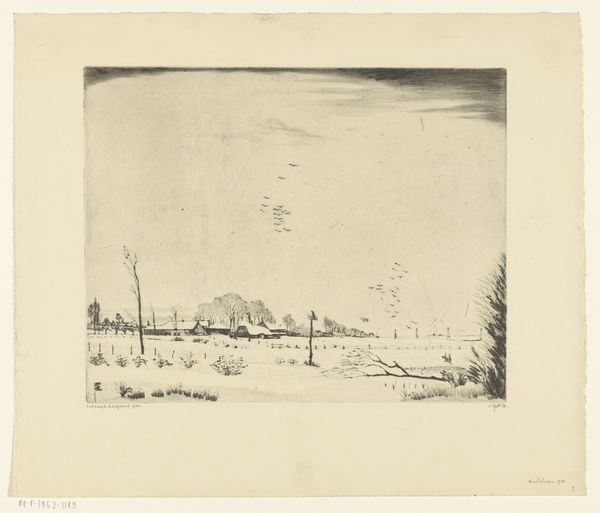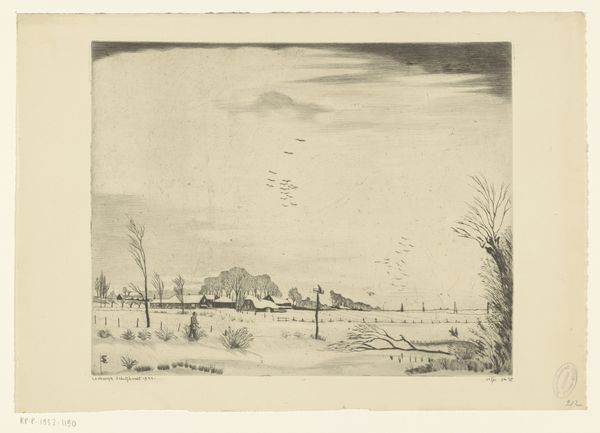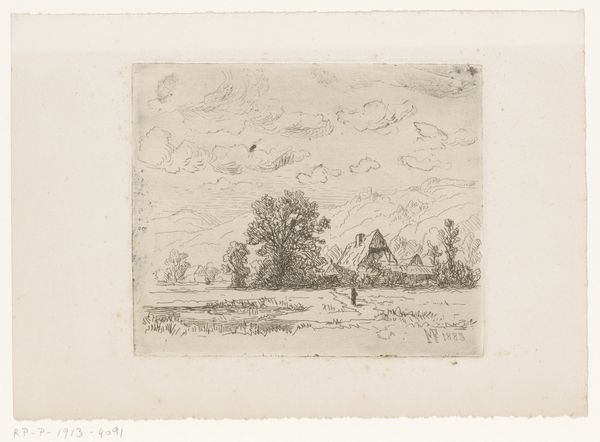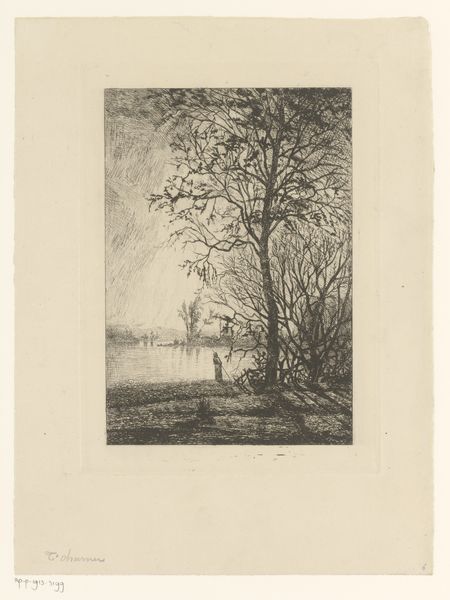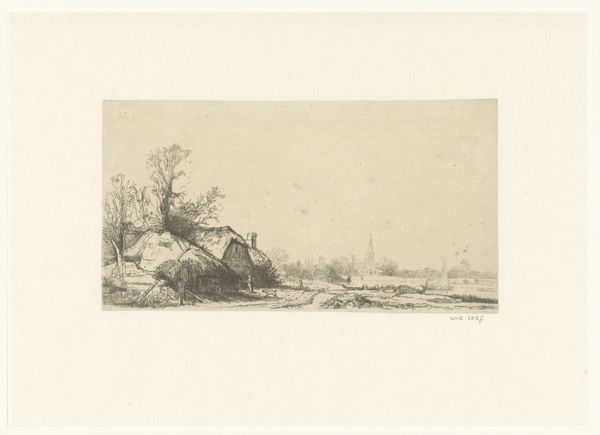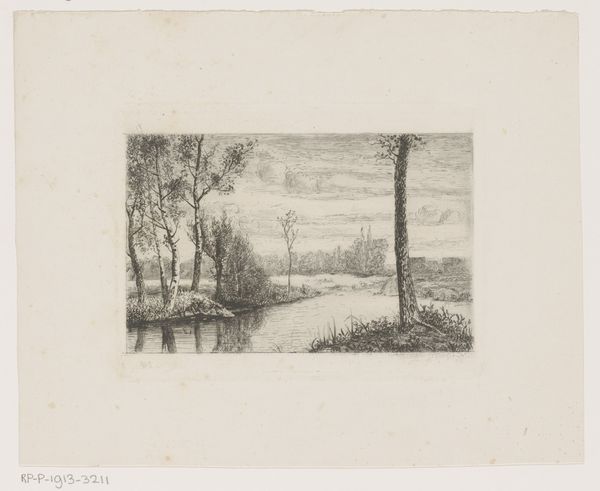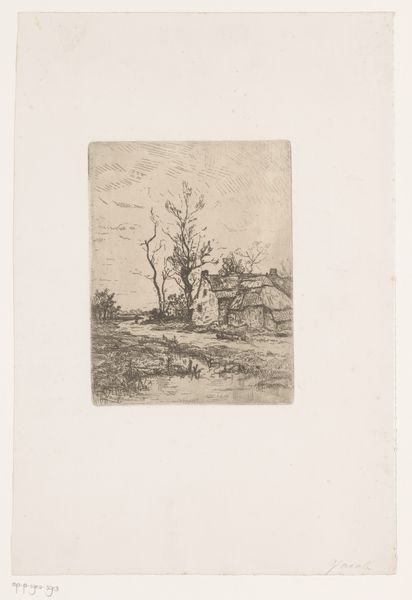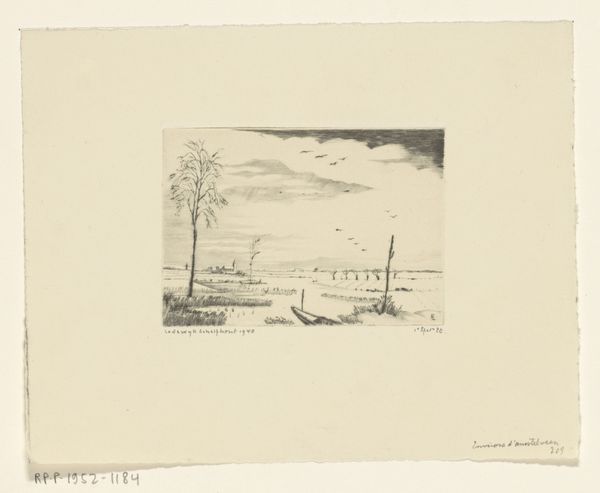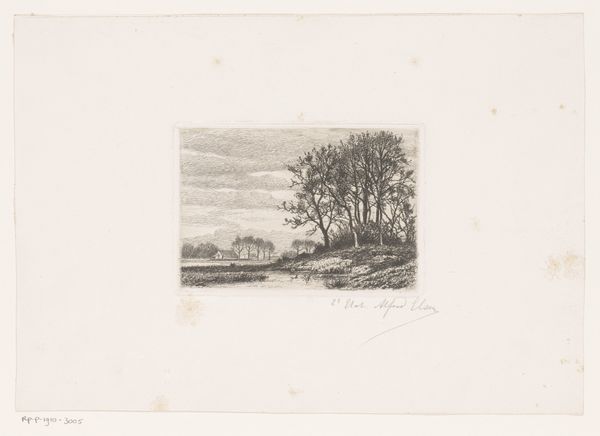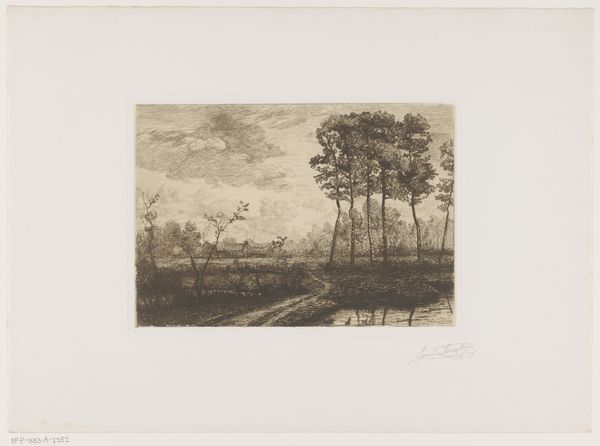
print, etching
#
aged paper
#
light pencil work
#
quirky sketch
#
dutch-golden-age
# print
#
etching
#
old engraving style
#
landscape
#
personal sketchbook
#
ink drawing experimentation
#
pen-ink sketch
#
sketchbook drawing
#
storyboard and sketchbook work
#
sketchbook art
#
realism
Dimensions: height 121 mm, width 158 mm
Copyright: Rijks Museum: Open Domain
Curator: The fine lines really pull you into this scene; it reminds me of a faded photograph, fragile and somehow distant. Editor: You're right, there's a delicate beauty to it. This etching, “Schaatsende figuur op een sloot” by Lodewijk Schelfhout, made in 1940, presents a stark winter landscape. Etching, of course, allows for that fine detail we both noticed through the use of acid to ‘draw’ the lines into the metal plate before printing. Curator: That's exactly it. It’s evocative of simpler times. Winter landscapes carry powerful emotional baggage, the bare trees standing sentinel, and the single figure all point to a strong symbolism, don't they? There's the church, and what looks like a windmill—symbols of community perhaps? Editor: Absolutely. Schelfhout clearly draws on the traditions of Dutch Golden Age landscape painting, particularly in the focus on ordinary life, though filtered through a decidedly modern lens. But focusing on the "how," the printed matrix allows for near infinite reproduction; this one becomes part of an every-person culture. Think about that—fine art democratized through an accessible and relatively inexpensive medium. Curator: The infinite copy does change the reception, it allows for ubiquity; the image becomes ubiquitous in Dutch culture, so does the yearning for a simpler time become ubiquitous, too? But even in the copy I can still see a narrative – the figure is skating towards the unknown, which speaks to the universal experience of facing life's uncertainties, especially during times of social and political upheaval like 1940. The windmill and the church seem to be on a precipice of becoming folklore through symbolism, Editor: Interesting how we look at the etching, the material itself, as either a mechanism for reproducibility or a symbolic bearer of tradition, right? Considering Schelfhout's choice of etching is less about high art ambition, more about getting images into circulation during wartime and, perhaps, generating some income, a different layer emerges from the symbolism. Curator: It really reframes my perspective; I saw continuity where perhaps practicality reigned supreme. Editor: And I saw materiality when cultural symbolism speaks. This has definitely complicated my viewing.
Comments
No comments
Be the first to comment and join the conversation on the ultimate creative platform.

